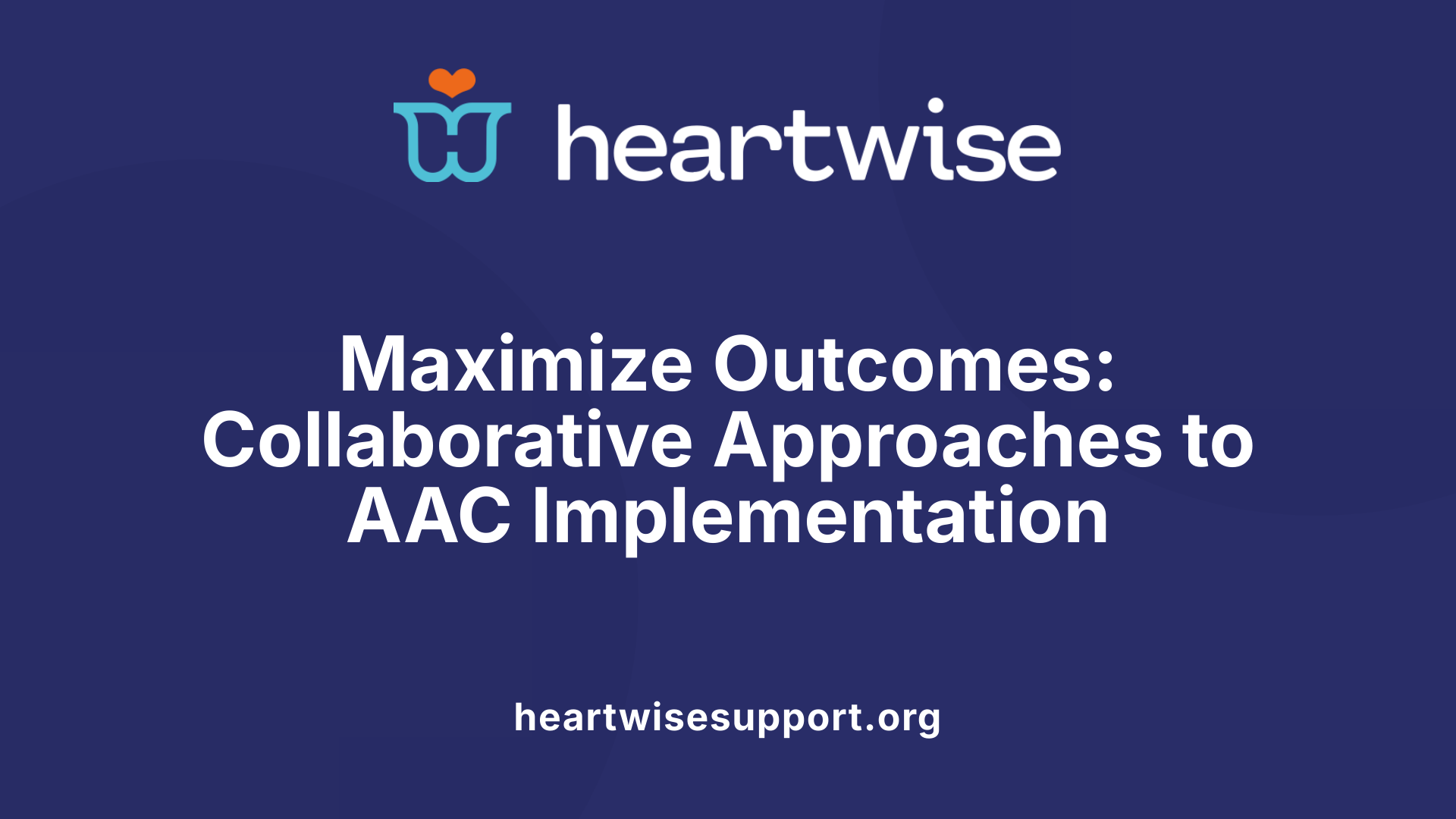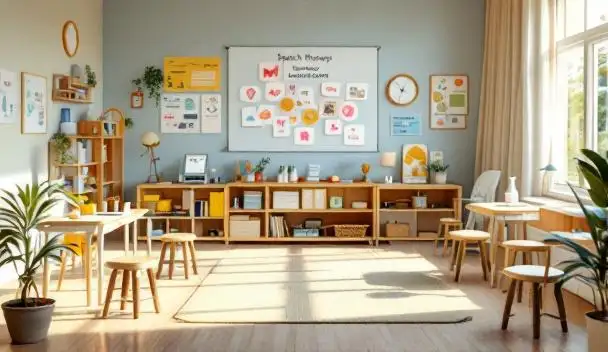Unlocking Effective Communication Through AAC
Augmentative and Alternative Communication (AAC) is a vital component of modern speech therapy, designed to support individuals with speech or language impairments. Whether through high-tech devices, low-tech supports, or no-tech methods, AAC provides alternative ways for people to express their needs, desires, and ideas. This article explores the comprehensive scope of AAC in speech therapy, including the types, tools, assessment processes, and the positive impact it has across all age groups.
Understanding AAC: An Inclusive Communication Approach

What is AAC and why is it important in speech therapy?
Augmentative and alternative communication (AAC) encompasses all methods and tools that aid communication beyond natural speech. This includes gestures, facial expressions, sign language, pictures, devices, and writing. AAC is vital for individuals of all ages who experience speech or language difficulties, helping them express needs, wants, thoughts, and ideas more effectively. It supports independence, reduces frustration, and promotes social participation.
AAC plays a crucial role in speech therapy by offering personalized communication solutions. It can be used temporarily, such as during recovery from a brain injury, or permanently for lifelong needs. Implementing AAC early, even in very young children, is essential as age or cognitive milestones are not barriers to starting communication support.
Aided vs. unaided AAC methods
AAC methods are generally categorized into two types: unaided and aided.
- Unaided methods involve body language, gestures, facial expressions, and sign language. They do not require external tools and are accessible to most individuals.
- Aided methods involve external supports such as communication boards, picture symbols, letter boards, and electronic devices like speech-generating devices or tablets with AAC apps.
High-tech tools include speech-generating devices, tablets, and specialized apps like Proloquo2Go, TouchChat, and LAMP Words for Life. Low-tech supports consist of picture books, writing tools, and pointing to photos or objects.
Broad range of communication needs addressed
AAC supports a wide spectrum of communication challenges stemming from various conditions. It benefits those with autism, cerebral palsy, stroke, traumatic brain injury, and degenerative neurological diseases like ALS.
Individuals who depend on ventilators, have facial trauma, or undergo head and neck surgeries also rely on AAC. It accommodates people with limited motor abilities by using switches, eye-gaze control, or head mice to access electronic systems.
AAC systems are adaptable, ranging from simple picture exchange to sophisticated speech-generating devices, tailored to individual skills, preferences, and environments.
Devices and tools used in AAC-based speech therapy
Speech-language pathologists (SLPs) help in selecting suitable AAC tools. Common devices include hardware like Pocket Talkers, Lingraphica devices, and high-tech tablets equipped with speech apps. Software options such as Proloquo2Go or TouchChat enable verbal message output with a press of a button.
Low-tech tools include communication boards, symbol cards, alphabet displays, and picture exchange systems. Some systems incorporate tactile symbols or visual scene displays for users with visual or cognitive needs.
The customization of devices and tools involves selecting appropriate symbols, programming vocabulary, and access methods. Ongoing training ensures users and their caregivers are comfortable and confident in using these systems.
Types and methods of AAC used in speech therapy
AAC includes numerous methods tailored to individual needs:
- Gestures and sign language: Suitable for very young children and those with motor abilities.
- Picture communication aids: Such as boards, books, and apps.
- Electronic speech-generating devices: Producing spoken words through touch, eye gaze, or switches.
- Writing and drawing: For users with sufficient motor skills.
SLPs assess the user's motor, sensory, cognitive, and language skills to determine the most effective AAC system. They train users and communication partners to support consistent and functional communication.
Benefits and applications across different age groups
AAC offers benefits at every life stage:
- Young children: Facilitates early language development, literacy, and social interaction.
- School-aged children: Enhances participation in education, peer communication, and self-expression.
- Adolescents: Supports social integration, academic pursuits, and independence.
- Adults: Helps maintain employment, social relationships, and quality of life.
Research shows that AAC use promotes language growth, improves social skills, and often supports even verbal speech development. It enables users to participate actively in daily life, reducing frustration and increasing confidence.
Main components of an AAC system
An AAC system is composed of:
| Component | Description | Examples |
|---|---|---|
| Symbols | Visual or tactile representations of words or ideas | Pictures, signs, written words |
| Aids | Devices or tools used for communication | Speech devices, apps, communication boards |
| Techniques | Methods of conveying messages | Gestures, eye-gaze, switch access |
| Strategies | Planning, training, and support | User instruction, modeling, environmental adaptation |
Each component is tailored to meet individual needs, ensuring effective and sustainable communication.
How speech therapy supports AAC implementation and effectiveness
SLPs evaluate individual communication abilities and prescribe appropriate AAC systems. They provide training on how to use devices correctly, demonstrating message selection, messaging strategies, and troubleshooting.
Training extends to family members and caregivers to ensure continuous support. Speech therapists also monitor progress, making adjustments to systems as skills and needs evolve. Collaboration with educators and healthcare providers enhances integration across environments.
This comprehensive support promotes successful AAC use, leading to increased participation, improved language skills, and greater independence.
Role of speech-language pathologists in AAC
SLPs are central to AAC services. They assess communication needs, recommend suitable tools, and facilitate device setup. They train users and their communication partners, ensuring systems are used correctly and efficiently.
SLPs also advocate for individuals to access AAC through funding and resource support. Their ongoing involvement helps optimize communication outcomes and advances users' social and functional skills.
Evaluation and assessment of AAC in speech therapy
Assessment involves multi-faceted processes:
- Reviewing speech, language, cognition, and motor skills
- Conducting formal and informal trials with various AAC systems
- Family and environmental considerations
- Dynamic assessment techniques to determine responsiveness and adaptability
The goal is to identify the most appropriate systems, customize vocabulary, and teach effective use. Regular follow-up ensures systems evolve alongside users' changing needs.
Conditions and diagnoses commonly treated with AAC
AAC is used for a variety of conditions including:
- Autism Spectrum Disorder
- Cerebral Palsy
- Stroke and aphasia
- Traumatic Brain Injury
- Progressive neurological diseases like ALS and Parkinson’s
- Genetic syndromes such as Down syndrome
- Severe speech sound disorders and apraxia
- Post-surgical cases like laryngectomy
In all cases, AAC helps bridge communication gaps, enabling expression and social participation.
Evidence supporting AAC in speech therapy
Research confirms that AAC improves communication, language, and social interactions. Early intervention with AAC supports vocabulary development and literacy, with positive long-term outcomes.
Studies demonstrate that AAC does not inhibit speech development; instead, it often facilitates vocalization and language growth. Integrating AAC with traditional therapy enhances overall communication skills, expanding participation in daily activities.
Continued research and clinical guidance ensure that AAC remains a vital, evidence-based component of speech-language pathology.
Integrating AAC into Speech Therapy Practice

How does speech therapy support the implementation and effectiveness of AAC?
Speech therapy plays a pivotal role in ensuring successful AAC integration. The process begins with comprehensive assessments that evaluate an individual's speech, language, cognitive, motor, hearing, and vision skills. Based on this, speech-language pathologists (SLPs) recommend the most suitable AAC systems, whether they are no-tech gestures, low-tech picture boards, or high-tech speech-generating devices.
SLPs provide essential training to both users and their communication partners, teaching them how to operate devices, select appropriate vocabulary, and model usage during daily activities. This ongoing support helps users become more proficient and confident, leading to more spontaneous and functional communication.
Collaborative planning with families, educators, and other professionals ensures consistency across environments, whether at home, school, or in the community. Regular system reviews and updates accommodate changes in the individual's skills or needs, fostering continued language growth.
Research emphasizes that AAC, when combined with targeted speech therapy, not only improves immediate communication but also promotes literacy development and social participation, laying a foundation for lifelong communication success.
What strategies are used to promote AAC adoption in daily life?
Adopting AAC strategies in everyday routines is critical for meaningful communication. Consistent modeling by communication partners—parents, teachers, caregivers—is essential. For example, showing how to use a device to request a snack or comment on an activity encourages imitation.
Incorporating AAC use into natural routines such as mealtime, play, and social interactions helps reinforce its practical application. Using visual supports, like picture cards or simplified device interfaces, makes communication more accessible.
Training caregivers and educators is fundamental; when they understand how to support and prompt AAC use with patience and encouragement, the individual gains confidence. Creating dedicated opportunities for practice, feedback, and reinforcement ensures that AAC becomes an integral part of daily life.
Advocacy at school and community levels further supports sustained use, fostering environments where individuals can communicate effectively, build relationships, and participate fully.
What collaborative efforts enhance AAC success?
Success in AAC implementation relies on a multidisciplinary team approach. Speech-language pathologists collaborate closely with occupational therapists, physical therapists, educators, and medical professionals to customize and optimize communication systems.
This teamwork ensures that devices are suitable for the user’s motor and sensory capabilities and that support strategies are consistent across settings. Regular meetings allow for the sharing of observations, troubleshooting, and goal adjustments.
Family involvement is especially crucial: training parents and caregivers helps them embed AAC use into daily routines and reinforce skills learned during therapy.
Through open communication and shared responsibilities, the team creates a supportive environment that promotes effective communication, social inclusion, and participation in various life activities.
What ongoing support and training are essential for effective AAC use?
Maintaining and enhancing AAC use requires ongoing support. Initial training involves familiarizing users with devices, developing messaging skills, and troubleshooting common issues. Periodic refresher sessions update vocabulary, optimize device settings, and address any challenges that arise.
Professional support from SLPs and other therapists helps users adapt to changing needs, especially if motor, sensory, or cognitive abilities evolve. Family and caregivers are integral to this process, providing daily reinforcement and quick troubleshooting.
Community resources, support groups, and educational programs extend learning opportunities, encouraging continued proficiency and confidence. Such sustained support ensures that AAC remains a meaningful and effective tool for communication, empowering individuals to achieve greater independence and social participation.
| Aspect | Details | Additional Notes |
|---|---|---|
| Assessment | Comprehensive evaluation to tailor AAC systems | Includes speech, motor, cognition, sensory skills |
| Device Selection | Team-based decision considering individual needs | No prerequisites needed for starting AAC |
| Training | User and caregiver education on device use and communication strategies | Ongoing support crucial |
| Collaboration | Multidisciplinary team involvement for customized solutions | Consistency across environments |
| Environmental Adaptation | Modifications in settings to support AAC use | Assistive technology specialists involved |
| Follow-up and Updates | Regular review for system and vocabulary adjustments | Ensures evolving needs are met |
| Community Support | Resources, training, and peer support networks | Facilitate long-term success |
This integrated approach guarantees that AAC becomes a natural part of daily communication, ultimately fostering independence, social participation, and improved quality of life for individuals with complex communicative needs.
Empowering Communication Through AAC in Speech Therapy
Augmentative and Alternative Communication is a dynamic, evidence-based approach that equips individuals with speech or language challenges with the tools necessary to express themselves effectively. Through thorough assessment, personalized device selection, effective training, and collaborative teamwork, speech therapists facilitate seamless integration of AAC into everyday life. The ongoing development of technology and research continues to expand the possibilities for AAC, emphasizing its role not just as a supplement but as a vital pathway to social inclusion, autonomy, and improved quality of life for people of all ages.
References
- Augmentative and Alternative Communication (AAC) - ASHA
- Augmentative and Alternative Communication (AAC) - ASHA
- Augmentative & Alternative Communication
- Augmentative and Alternative Communication (AAC) - UR Medicine
- Augmentative and alternative communication (AAC) overview - RCSLT
- Augmentative and Alternative Communication (AAC)
- SLP's Guide to Teaching AAC - Speech And Language Kids
- Augmentative and Alternative Communication | Duke Health
- Augmentative and Alternative Communication | Clinical Services











